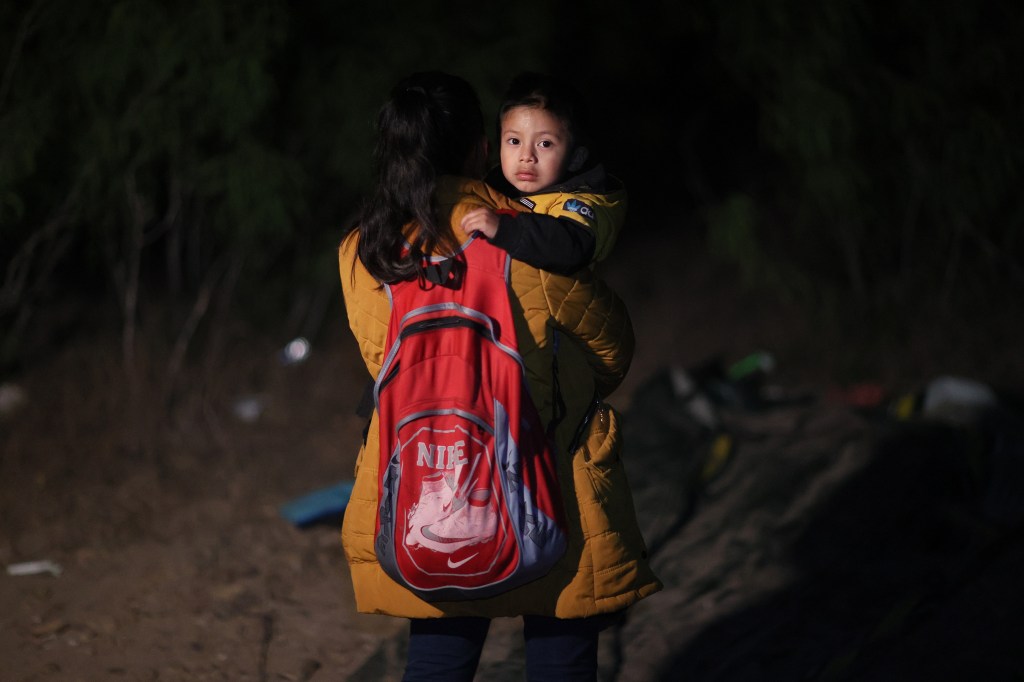Tens of thousands of Central American immigrants who are victims of gang violence and domestic abuse now have a better shot at winning asylum in the U.S thanks to a new policy change that has sweeping implications for how the United States treats vulnerable people seeking refuge there.
A pair of decisions by the Department of Justice reversed one of former U.S. President Donald Trump’s most draconian immigration policies by reinstating provisions that give survivors of gang and domestic violence a chance of obtaining asylum.
Videos by VICE
The shift is one of the most significant by the Biden administration, and could serve as a balm to activists who accuse the president of not moving fast enough to reverse Trump’s anti-immigrant policies that made it harder for migrants to gain entry into the U.S. and also to win asylum after they arrived.
The new policy will likely increase the approval rate for asylum applications, which fell to historic lows under the Trump administration, immigration experts said. Significantly, migrants arriving at the U.S.’ southern border could also have a better chance of gaining entry under the grounds that they face a credible fear in their home countries.
“The decision will have an enormous effect on individuals who are coming to the border and seeking protection who will no longer be forced to satisfy a much higher standard than had ever been applied to asylum seekers in the past,” said Aaron Reichlin-Melnick, policy counsel at the American Immigration Council, a left-leaning think tank.
Winning asylum became exponentially harder under the Trump administration. More than 70 percent of asylum applications were denied in 2020, during Trump’s last year in office, compared to a denial rate of 54 percent, in the last year of the Obama administration, according to Syracuse University’s Transactional Records Access Clearinghouse (TRAC), which tracks asylum cases.
The new policy applies to all asylum seekers, but it is likely to have an outsized impact on Central Americans, where gang and domestic violence are among the primary drivers of migration. According to a 2017 report from Doctors without Borders, roughly 11 percent of people fleeing Honduras, El Salvador and Guatemala were victims of domestic violence. And nearly 40 percent mentioned “direct attacks or threats to themselves of their families, extortion or gang-forced recruitment as the main reason for fleeing.”
They include people like Carlos René, 39, who left Honduras in March 2019 because of gang threats. He owned a small convenience store and was forced to pay an extortion fee to the gangs to continue operating it. But he stopped being able to pay.
“If you don’t pay the gang’s fee, they kill you,” he said.
After reaching the U.S. four months later, René and his daughter were sent back to Mexico under a Trump administration policy that required asylum seekers to wait in Mexico while their immigration cases were decided. Biden reversed that policy, and René said he is hoping to get word this week on when they can enter the U.S.
He hadn’t heard of the newest policy change around the reasons for being granted asylum, but said: “We want to do things legally…We just want to get in and find help.”
The Justice Department framed the policy shift in sweeping, human terms. “These decisions involve important questions about the meaning of our Nation’s asylum laws, which reflect America’s commitment to providing refuge to some of the world’s most vulnerable people,” Associate Attorney General Vanita Gupta wrote in a memo to immigration judges.
Under the new regulations, René will now have a shot of winning asylum based on the gang violence he suffered. “It doesn’t mean that they’ll get it, just simply that they’ll be eligible,” said Austin Kocher, assistant professor at Syracuse University who studies immigration policy.
Still, the outcome of specific cases is likely to depend as much on the immigration judge they appear before as the new directives from the Justice Department, he cautioned.
Immigration judges have wide discretion in deciding asylum cases, leading to enormous disparities. At the New York Immigration Court, for example, denial rates “ranged from 95 percent down to 3 percent” depending on the judge, according to TRAC data.
More than half of the immigration judges currently on the bench were appointed by the Trump administration. “Whether or not this change of policy really results in a change of approval rates will partly be up to how these judges put this into practice,” Kocher said.
In Mexico and Central America, reports of the new policy quickly spread on Facebook groups dedicated to migrants. Some migrant rights activists in Central America said they were concerned that human smugglers, aided by careless reporting in the local news, could distort the move into a new selling point for people considering going to the U.S.
“It’s going to be a boom in the local media, and if the message isn’t transmitted correctly, we are going to see people leaving the country,” said Karen Valladares, director of the migrant rights organization FONAMIH in Honduras. Human smugglers “are going to use this information for their own personal gain.”
In the coming months, the Biden administration is expected to roll out new guidelines that will clarify eligibility for asylum and move policy closer to internationally accepted standards.
According to reports, the Biden administration also plans to make procedural changes that would make it so many asylum applicants who are detained at the border have their case heard by an asylum officer, only passing to a judge if the application is denied.






